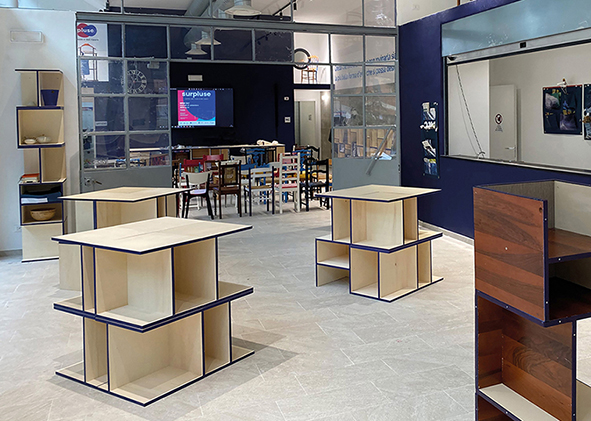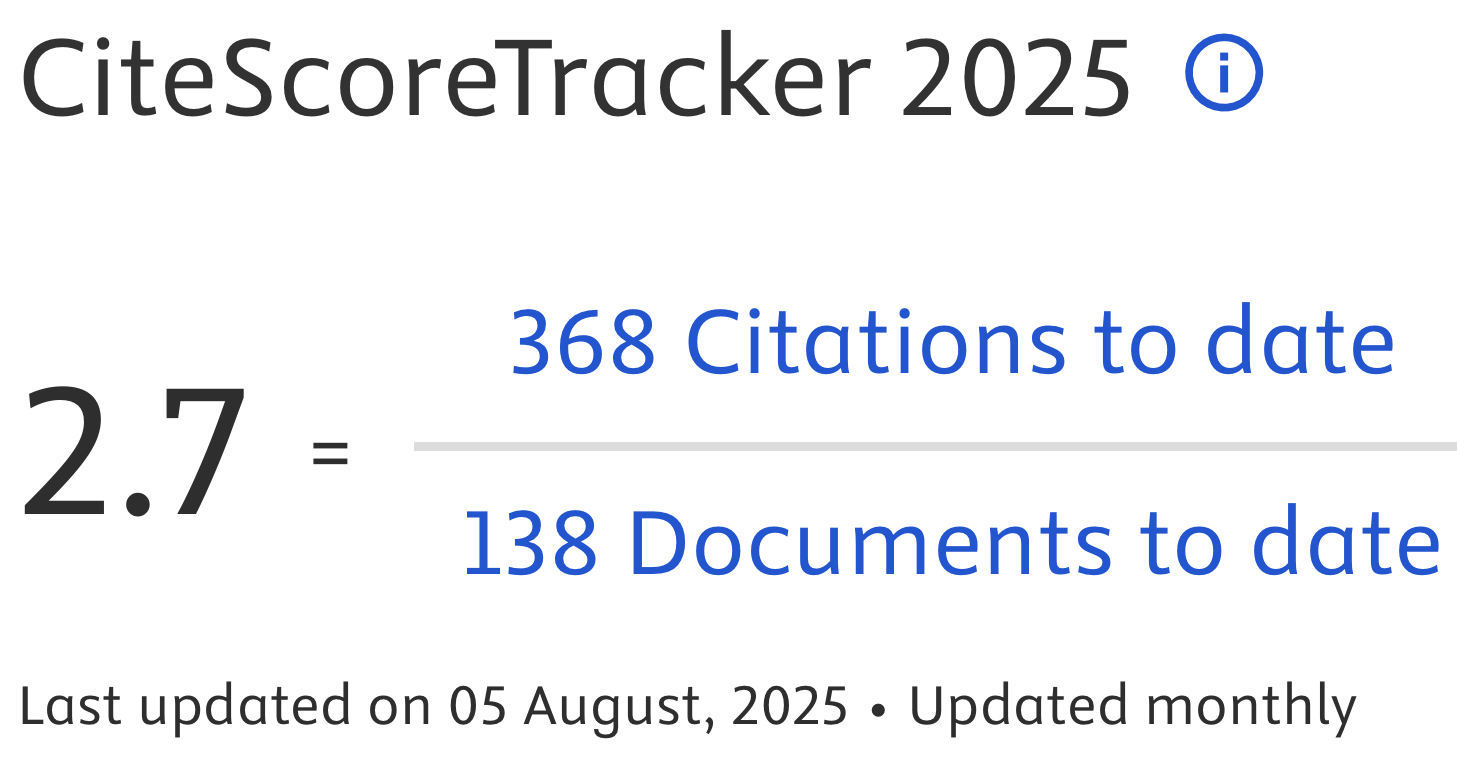Services for reuse and repair – The arrangement between touchpoints and relational infrastructures
DOI:
https://doi.org/10.19229/2464-9309/15272024Keywords:
circular economy, setup, touchpoint, reuse and repair, service designAbstract
Regarding the circular economy and strategies, this paper describes the research/action project related to establishing a new Reuse and Repair Centre within the Surpluse network. The paper aims to illustrate the design choices of the setup, considered as a touchpoint for the definition of a network (service) and to facilitate interactions between displayed second-hand items and users. The proposed model becomes a format to be adapted in the creation of new future centres and the implementation of existing ones; furthermore, it aims to incentivise behaviours in favour of sustainability strategies and raise awareness among citizens for active participation within and in favour of the circular economy, co-designing relationships among the various stakeholders involved.
Article info
Received: 18/03/2024; Revised: 18/04/2024; Accepted: 25/04/2024
Downloads
Article Metrics Graph
References
Banaji, S. and Buckingham, D. (2009), “The civic sell – Young people, the internet, and ethical consumption”, in Information, Communication & Society, vol. 12, issue 8, pp. 1197-1223. [Online] Available at: doi.org/10.1080/13691180802687621 [Accessed 16 March 2024].
Bitner, M. J. (1992), “Servicescapes – The impact of physical surroundings on customers and employees”, in Journal of Marketing, vol. 56, issue 2, pp. 57-71. [Online] Available at: doi.org/10.1177/002224299205600205 [Accessed 16 March 2024].
Blomsma, F. and Tennant, M. (2020), “Circular economy – Preserving materials or products? Introducing the Resource States framework”, in Resources, Conservation and Recycling, vol 156, article 104698, pp. 1-13. [Online] Available at: doi.org/10.1016/j.resconrec.2020.104698 [Accessed 16 March 2024].
Bonsiepe, G. (1995), Dall’oggetto all’interfaccia – Mutazioni del design, Feltrinelli, Milano.
Calvo, M. and De Rosa, A. (2017), “Design for social sustainability – A reflection on the role of the physical realm in facilitating community co-design”, in The Design Journal, vol. 20, issue sup 1, pp. S1705-S1724. [Online] Available at: doi.org/10.1080/14606925.2017.1352694 [Accessed 16 March 2024].
Cautela, C. and Rampino, L. (2019) “Le Tipologie d’Innovazione nel Design – Analisi Critica di una Relazione Complessa | Design Innovation Typologies – A critical Analysis of a Complex Relationship”, in Agathón | International Journal of Architecture Art and Design, vol. 5, pp. 127-136. [Online] Available at: doi.org/10.19229/2464-9309/5142019 [Accessed 16 March 2024].
Ceschin, F. and Gaziulusoy, I. (2016), “Evolution of design for sustainability – From product design to design for system innovations and transitions”, in Design Studies, vol. 47, pp. 118-163. [Online] Available at: doi.org/10.1016/j.destud.2016.09.002 [Accessed 16 March 2024].
Crippa, D. and Di Prete, B. (2011), Verso un’estetica del momentaneo – L’architettura degli interni da progetto al processo, Maggioli, Santarcangelo di Romagna.
Crippa, D., Cason Villa, M., Di Prete, B., Ratti, L., Rebaglio, A., Zanini, M. and Zanotto, F. (2022), “Verso un progetto circolare, tra architettura e allestimento – Piattaforme digitali per il riuso | Towards a circular project, between architecture and exhibition design – Digital platforms for reuse practices”, in Agathón | International Journal of Architecture Art and Design, vol. 12, pp. 234-245. [Online] Available at: doi.org/10.19229/2464-9309/12212022 [Accessed 16 March 2024].
D’Urzo, M. and Campagnaro, C. (2023), “Design-led repair & reuse – An approach for an equitable, bottom-up, innovation-driven circular economy”, in Journal of Cleaner Production, vol. 387, article 135724, pp. 1-15. [Online] Available at: doi.org/10.1016/j.jclepro.2022.135724 [Accessed 16 March 2024].
De Rosa, A. (2022), S+S – Spatial Design + Service Design, Maggioli, Santarcangelo di Romagna.
Deni, M. (2018), “L’intégration de l’usager dans le design social – Stratégies d’appropriation”, in Basso Fossali, P. and Le Guern, O. (eds), L’appropriation – L’interprétation de l’altérité et l’inscription du soi, Lambert-Lucas, Limoges, pp. 185-198.
Ellen MacArthur Foundation (2013), Towards the Circular Economy – Vol. 1 – Economic and business rationale for an accelerated transition. [Online] Available at: ellenmacarthurfoundation.org/towards-the-circular-economy-vol-1-an-economic-and-business-rationale-for-an [Accessed 16 March 2024].
European Parliament (2023), Proposal for a Directive of the European Parliament and the Council on common rules promoting the repair of goods and amending Regulation (EU) 2017/2394, Directives (EU) 2019/771 and (EU) 2020/1828, document 52023PC0155, 155 final. [Online] Available at: eur-lex.europa.eu/legal-content/EN/ALL/?uri=celex:52023PC0155 [Accessed 16 March 2024].
Fagnoni, R., Ferrari Tumay, X. and Olivastri, C. (2022), “Surpluse – Centri del riuso e del riparo”, in Ferrara, C., Germak, C., Imbesi, L. and Trapani, V. (eds), Design per Connettere | Atti Assemblea annuale SID, February 25-26 2021, Palermo, pp. 714-727. [Online] Available at: societaitalianadesign.it/wp-content/uploads/2014/06/SID_Design-per-connettere_Palermo_03082022.pdf [Accessed 16 March 2024].
Findeli, A. (1994), “Ethics, Aesthetics, and Design”, in Design Issues, vol. 10, issue 2, pp. 49-68. [Online] Available at: doi.org/10.2307/1511628 [Accessed 16 March 2024].
Felix, E. (2011), “Learning Space Service Design”, in Journal of Learning Spaces, vol. 1, issue 1, pp. 1-8. [Online] Available at: files.eric.ed.gov/fulltext/EJ1152686.pdf [Accessed 16 March 2024].
Germak, C. (2019), “Design resiliente – Un quadro sinottico | Resilient Design – A synoptic framework”, in Agathón | International Journal of Architecture Art and Design, vol. 6, pp. 26-35. [Online] Available at: doi.org/10.19229/2464-9309/632019 [Accessed 16 March 2024].
Gobert, J. and Allais, R. (2019), “Repair and reuse networks? A practical application of a spatio-temporal analysis method”, in 59th ERSA Congress Cities, regions and digital transformations | Opportunities, risks and challenges, August 27-30, 2019, Lyon, France, pp. 1-16. [Online] Available at: enpc.hal.science/hal-02382891/document [Accessed 16 March 2024].
Interreg Europe (2022), Reuse and Repair in a Circular and Social Economy – A Policy Brief from the Policy Learning Platform on Environment and Resource Efficiency [Online] Available at: interregeurope.eu/sites/default/files/2022-12/Policy%20brief %20on%20reuse%20and%20repair%20in%20a%20circular %20and%20social%20economy.pdf [Accessed 21 April 2024].
Lynn Shostack, G. (1982), “How to Design a Service”, in European Journal of Marketing, vol. 16, issue 1, pp. 49-63. [Online] Available at: doi.org/10.1108/EUM0000000004799 [Accessed 16 March 2024].
Medkova, K. (2022), “REUSE Centre Ostrava – Giving new life to goods”, in Lab University Applied Sciences, 23/05/2022. [Online] Available at: blogit.lab.fi/labfocus/en/reuse-centre-ostrava-giving-new-life-to-goods/ [Accessed 21 April 2024]
Moalem, R. M. and Mosgaard, M. A. (2021), “A critical review of the role of repair cafés in a sustainable circular transition”, in Sustainability, vol. 13, issue 22, article 12351, pp. 1-25. [Online] Available at: doi.org/10.3390/su132212351 [Accessed 16 March 2024].
Pacenti, E. (2019), “Design ed estetica nei servizi”, in Tassi, R. (ed.), #ServiceDesigner – Il progettista alle prese con i sistemi complessi, FrancoAngeli, Milano, pp. 36-41.
Pei, X. and Zurlo, F. (2019), “Co-Design per il Rebranding di una Fondazione Italiana | Co-Design for Rebranding an Italian Foundation”, in Agathón | International Journal of Architecture Art and Design, vol. 5, pp. 161-166. [Online] Available at: doi.org/10.19229/2464-9309/5182019 [Accessed 16 March 2024].
Penin, L. (2018), Designing the invisible – An introduction to Service Design, Bloomsbury, London.
Olivastri, C. and Tagliasco, G. (2023), “Sustainability Needs Service Efficacity”, in Ciravegna, E., Formia, E., Gianfrate, V., Sicklinger, A. and Zannoni, M. (eds), Disrupting Geographies in the Design World | Proceedings of the 8th International Forum of Design as a Process – Alma Mater Studiorum, Università di Bologna, digital special issue 1, pp. 118-125. [Online] Available at: air.iuav.it/retrieve/7b8437ec-33fd-4b05-b858-c7adc5714f26/Battistoni%20-%20diid.pdf [Accessed 16 March 2024].
Sinni, G. (2018), Una, nessuna, centomila – L’identità pubblica da logo a piattaforma, Quodlibet, Macerata.
Stahel, W. R. (1994), “The utilization-focused service economy – Resource efficiency and product-life extension”, in Allenby, B. R. and Richards, D. J. (eds), The Greening of Industrial Ecosystems, National Academy Press, Washington (DC), pp. 178-190. [Online] Available at: nap.nationalacademies.org/read/2129/chapter/17 [Accessed 16 March 2024].
Sung, K. and Dao, T. (2021), “Repair and Upcycling – How Do We Know Which Repair Is Considered as Upcycling?”, in Sung, K., Singh, J. and Bridgens, B. (eds), State-of-the-Art Upcycling Research and Practice – Lecture Notes in Production Engineering, Springer, Cham. pp. 105-109. [Online] Available at: doi.org/10.1007/978-3-030-72640-9_20 [Accessed 16 March 2024].
Tschumi, B. (2005), Architettura e Disgiunzione, Edizioni Pendragon, Bologna.
Tyl, B. and Allais, R. (2019), “Living labs to develop reuse and repair workshops in territories”, in Nissen, N. F. and Jeager-Erben, M. (eds), 3rd PLATE 2019 Conference – 18-20 September 2019 – Berlin, Germany, pp. 1-5. [Online] Available at: hal.science/hal-03037239 [Accessed 18 April 2024]
Van Geetsom, N. (2018), “Space and service design into educational practice”, in Meroni, A., Ospina Medina A. M. and Villari, B. (eds), Service Design Proof of Concept – Proceedings of the ServDes.2018 Conference – June 18-20, 2018, Milan, Italy, pp. 863-875. [Online] Available at: ep.liu.se/ecp/150/ecp18150.pdf [Accessed 16 March 2024].
Van Geetsom, N. and Wilkinson, A. (2021), “Design culture (of) resilience – Space & Service design taxonomy, overcoming undefined space & service design contexts”, in Di Lucchio, L., Imbesi, L., Giambattista A. and Malakuczi, V. (eds), Design Culture(s) – Cumulus Conference Proceedings Roma, June 8-11, 2021, vol. 2, pp. 3264-3281. [Online] Available at: cumulusroma2020.org/proceedings-files/DC(s)_PROCEEDINGS_full_vol2.pdf [Accessed 16 March 2024].
Wegener, C. (2016), “Upcycling”, in Glăveanu, V. P., Tanggaard, L. and Wegener, C. (eds), Creativity – A New Vocabulary, Palgrave Macmillan, London, pp. 181-188. [Online] Available at: doi.org/10.1057/9781137511805_22 [Accessed 16 March 2024].
Zeithaml, V. A., Parasuraman, A. and Berry, L. L. (1985), “Problems and strategies in services marketing”, in Journal of Marketing, vol. 49, issue 2, pp. 33-46. [Online] Available at: doi.org/10.1177/002224298504900203 [Accessed 16 March 2024].

Downloads
Published
How to Cite
Issue
Section
Categories
License
Copyright (c) 2024 Chiara Olivastri, Giovanna Tagliasco

This work is licensed under a Creative Commons Attribution 4.0 International License.
This Journal is published under Creative Commons Attribution Licence 4.0 (CC-BY).
License scheme | Legal code
This License allows anyone to:
Share: copy and redistribute the material in any medium or format.
Adapt: remix, transform, and build upon the material for any purpose, even commercially.
Under the following terms
Attribution: Users must give appropriate credit, provide a link to the license, and indicate if changes were made; users may do so in any reasonable manner, but not in any way that suggests the licensor endorses them or their use.
No additional restrictions: Users may not apply legal terms or technological measures that legally restrict others from doing anything the license permits.
Notices
Users do not have to comply with the license for elements of the material in the public domain or where your use is permitted by an applicable exception or limitation.
No warranties are given. The license may not give users all of the permissions necessary for their intended use. For example, other rights such as publicity, privacy, or moral rights may limit how you use the material.


















































































